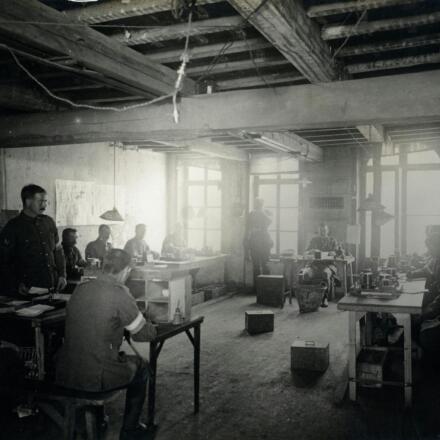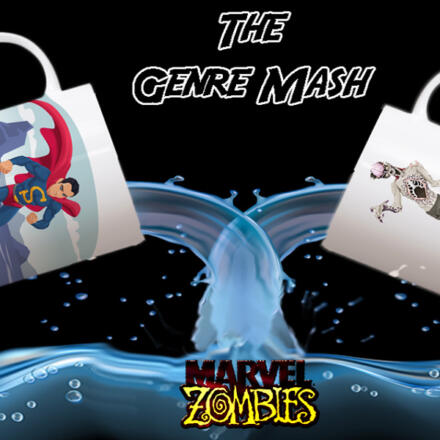
Want to write better adventures?
Want to prep more efficiently?
Sick of players skipping all of your best content?
Prep Smarter, Not Harder, with Encounter Theory
Encounter Theory: The Adventure Design Workbook is a fresh way to look at adventure design by Ben Riggs, the voice of the Ennie-Nominated Plot Points podcast. Using his background in teaching and adventure review, he dissects what we think of as an adventure and helps us get to the core of what makes one great–the encounter.

Adventure Craft and You
How did you learn to write tabletop adventures for your players? You’ve had creative writing assignments in English, maybe even taken a course in creative writing. Perhaps, you started by delving into old D&D modules or stared at the cloudlike white space of a sheet of paper until a story began to form. But, what are the steps? Where are the instructions on how to do this? Could it be, that we don’t really know how to write an RPG adventure?
But Pete, I’ve run many great adventures!
Sure, but how did you do it? How do you write a good adventure, can you explain it? Better yet, can you show me how? A good GM can make the best of a badly written adventure just as they can homebrew their favorite system to work for any setting. It doesn’t have to be perfect to pass for fun. As GMs, we get SO good at improvising, that we can work with “good enough”. But, do you really want to settle for “good enough” adventures?
Principles to Adventure By
Why the encounter? Because the encounter is the core experience of play and our most quantifiable unit. As Ben says, the encounter is where design meets play.
Description is the BIG word there. Adventure writing is hard, mostly because we drown the reader in it or offer too little, too generic, to capture the mood. Arguably, the greatest feature of Encounter Theory is that it can help a GM narrow down just how much description we should apply in adventure design.
Guiding Principles of Encounter Theory Design:
- Face the Player and Free the Player
- Present Problems Not Solutions
- Use the Dungeon as Adventure Structure
- Give Playable, Specific, Sensory, and Short Description
Encounter Theory is a method of efficiently focusing GMs on creating adventure plans that are ONLY player facing and that maximize player agency. Unlike other mediums of fiction, tabletop roleplaying is collaborative. So, providing any description that is not actionable for a player at the table is a waste of your prep time, as it doesn’t fit how the content is used (excess location history or long NPC backstories). Players need specific descriptive information that is short and sensory. They need to be provided description in a way that their characters can interpret (smell, sight, touch, hear, feel). Anything that does not help a player understand a situation through their character is more to read, more to say, and ultimately, more to delay play. Players come to play!

Unlike writing short stories, the narrative of where play goes should be decided by the players, not the Game Master. A GM should present problems but avoid presenting solutions. That’s not to say that you can’t help players if they get stuck in the fog. It is to say that players should be free to create solutions and find their own way to the next encounter, their own way through the adventure. We have the freedom to explore endless options to solving problems, why limit ourselves to a few dialogue options like some sort of a video game?
What Does This Look Like
Imagine the model of a dungeon for your game session, plot plan, or campaign storyline. Players begin their adventure at its start with a call to action. As the GM, you set the scene, describing where they are, what’s going on, and a problem for them to fix. No matter how they go about solving their problem, there is a clue, a lead, to have them visit the next room, the next encounter. A series of encounters act as rooms leading to the climax, boss fight, or final revelation.

Encounter Theory helps a GM create only as much information as is necessary, minimizing prep, and helping players to get to play faster. It trims down the size of adventures, so that we as GMs can get to running them faster. It helps to focus GMs on player facing information that is immersive (five senses) and to the point. When writing RPG adventures you shouldn’t be writing novels. We’ve learned how to write short stories, maybe even written books, but writing adventures isn’t the same. They are imaginary sandboxes put out for our players to play with, and for the GM to revel in. Save time and focus on your players. Give them what they need to find their fun!
Want to Know More
For more on Encounter Theory: The Adventure Design Handbook, pick up a copy at DriveThruRPG. The book offers a variety of playplans (as seen in images throughout) to help you put these principles into practice for a variety of settings and situations. Use the Adventure Starter to develop adventure ideas, the Opponent Starter to create worthy adversaries, the list goes on and on. Ben even includes a 5E adventure laid out as an example or for your use at the table. For more on Ben Riggs, adventure design, and his work chronicling TSR, download an episode of Plot Points.

What did Ben miss?
How would you add to Encounter Theory?
How did you learn adventure design?Â

















This intrigued me, but I couldn’t get me head around what Encounter Theory really was. But, feeling hopeful, I put my $10 down and got the PDF.
First Impressions:
* No bookmarks. Ugly table of contents and nothing is hot. This makes it hard to use a reference. I hate paying for a PDF without bookmarks and links.
* The layout looks like a Word document, but it’s readable. This is a RPG design idea book, not a RPG layout idea book.
* The basic idea is a good one: write what will get used at the table. Not backstory that will never get discovered in play. If you listen to the podcast “Ken and Robin Talk About Stuff” this will be familiar to you.
* Most of the book are a series of “playpens” where you, as the GM (or published adventure writer) come up with ideas for the adventure and the encounters that make it up. There are questions and prompts for you to create the scaffolding of your adventure. For any one adventure you might use 4 or so of the 16 “playpens” contained.
* Horror, investigation, and fantasy encounter playpens are covered, but science fiction is not. I think there’s enough examples here for me to make my own.
* There are two playpens on relationship games, like Vampire the Masquerade.
* There is enough depth here that I’m going to have to use it to create an adventure to see what I get from it. At worst this has ideas that will give me something to think about. I’m looking forward to giving it a go.
This intrigued me, but I couldn’t get me head around what Encounter Theory really was. But, feeling hopeful, I put my $10 down and got the PDF.
First Impressions:
* No bookmarks. Typewriter style table of contents and nothing is hot. This makes it hard to use a reference. I prefer published PDF to have bookmarks and links.
* The layout looks like a Word document, but it’s readable. This is a RPG design idea book, not a RPG layout idea book.
* The basic idea is a good one: write what will get used at the table. Not backstory that will never get discovered in play. If you listen to the podcast “Ken and Robin Talk About Stuff” this will be familiar to you. I love reading about game design.
* Most of the book are a series of “playplans” where you, as the GM (or published adventure writer) come up with ideas for the adventure and the encounters that make it up. There are questions and prompts for you to create the scaffolding of your adventure. For any one adventure you might use 4 or so of the 16 “playplans” contained.
* Horror, investigation, and fantasy encounter playplans are covered, but science fiction is not. I think there’s enough examples here make your own. The fantasy one is pretty close.
* There are two playplans on relationship games, like Vampire the Masquerade.
* I like how the “playplans” remind you to add fun things into encounters, for example, adding the wonderous to all fantasy encounters.
* The advice on formatting was, well, advice I’m happy to ignore. Look how the example in the back is presented. Not my style. Your mileage may vary.
* There is enough depth here that I’m going to have to use it to create an adventure to see what I get from it. At worst this has ideas that will give me something to think about. I’m pretty sure it’ll be a great framework to at least start a good adventure.
* There’s a nice example at the end. While I was not a fan of the presentation, I think it would be a very fun adventure to play, which is the point.
* Worth $10? I think so.
Thank you sharing this! I’m sure many readers will appreciate your breakdown. 😀
Pete! As I prepare to start writing up around 250 encounters for my recent article series (not all at once thank goodness!) here you go and put this book on my radar.
Procrastinate from prep by reading a book you say?
Fool myself into thinking it’s NOT procrastination because it could be helpful to my current project you say?
$10 you say?
Well…. If you’re going to twist my arm like THAT, how can I resist?
So, having given it a quick read, well worth the price tag. The meat of the book is only 20ish pages, and maybe the advice in it isn’t completely groundbreaking BUT it’s a solid set of advice that will really help write encounters, it’s all in one place (location location location), and it’s in digestible enough chunks that you can conceivably give yourself a quick refresher now and again when you’re not feeling it.
And then there’s the ~50 pages of quick and easy templates for all sort of encounters, adventures etc… that can really help you by letting you just drop in elements and away you go! Really useful! I do agree with the commenter above, hyperlinks would have been nice, BUT page numbers are serviceable. I’ll live.
So, $10 for 20 pages of solid advice, 50 pages of templates, of which you will probably only use a dozen (right away anyway. If you play in a lot of different genres, if you prep for home use, and also want to get published, etc… you MAY end up using them ALL) plus a hefty sample so you can see it in execution? In the absolute worst case analysis you’re looking at maybe 35¢ a page for a solid resource. Great deal as far as I’m concerned.
Thanks for dropping this JUST when I needed it.
Heya Matt, so glad you found this valuable! I was obviously very impressed by Ben’s work and felt I had to share it with our GM audience.
His book is just as long as it needs to be, right!? It would be funny for him to tell us one thing (don’t bog down players and GMs with detail) and then go on and on in his book. So, it is short, sweet, and actionable!
Can’t wait to see what you are working on for your Encounter project!